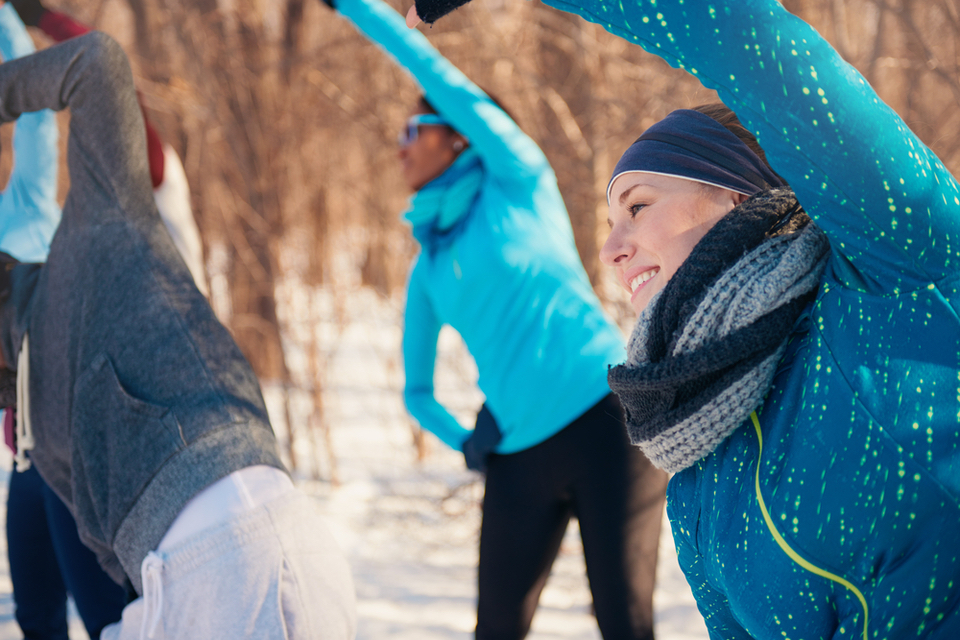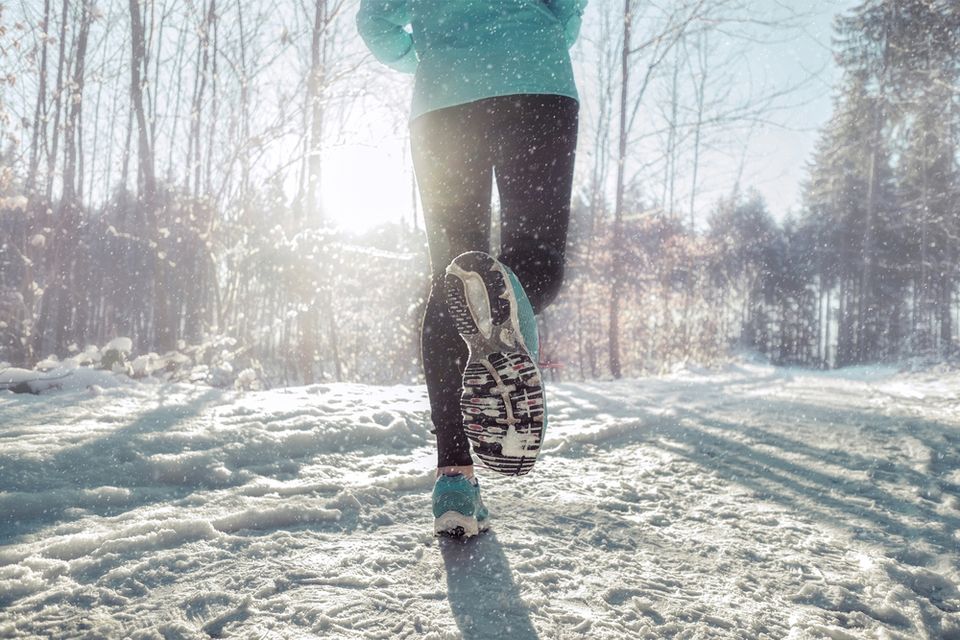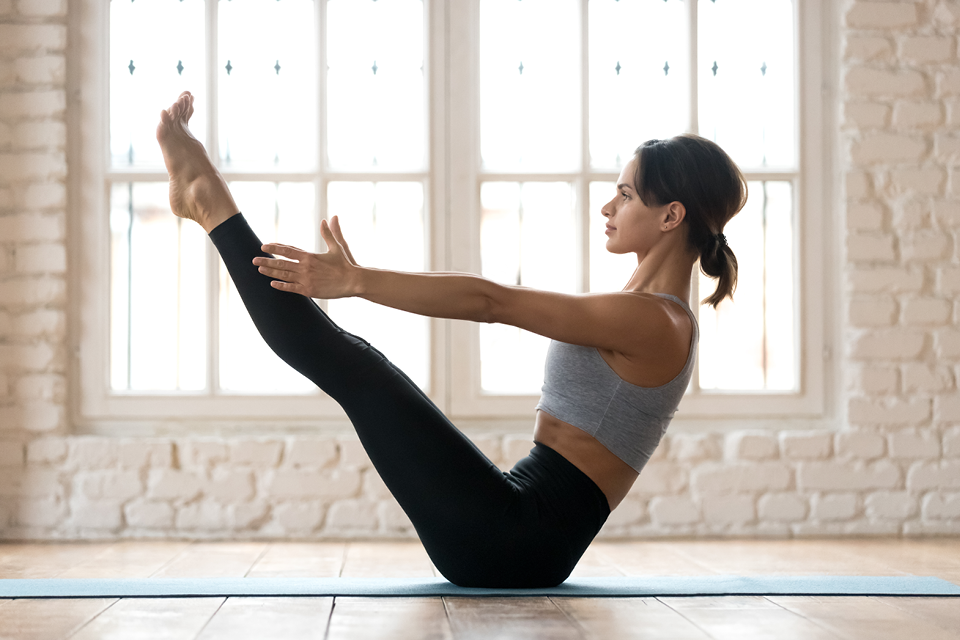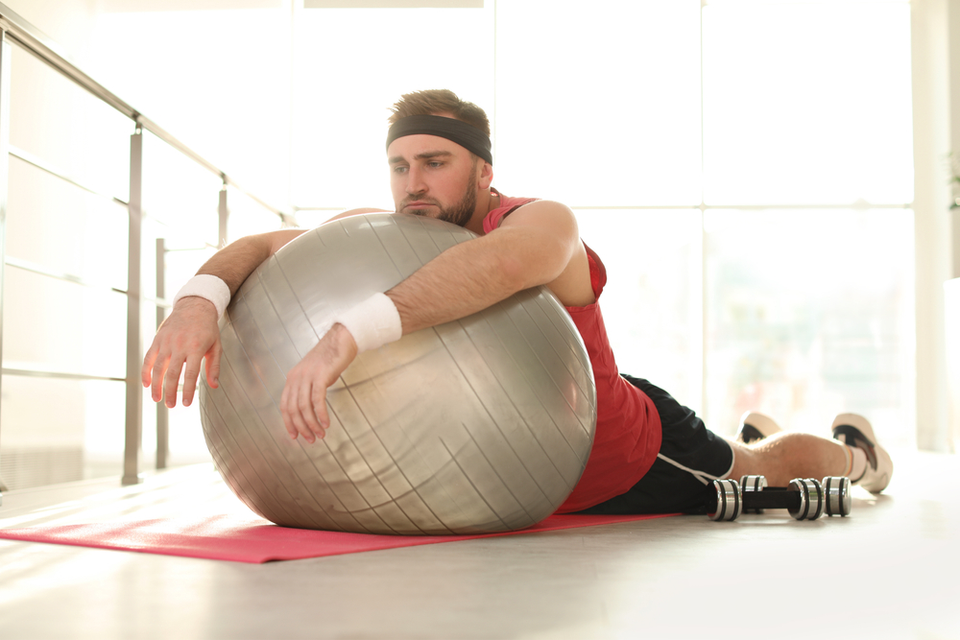Winter is here! And for some of us, that means some frigid temperatures and snow and ice! If you still want to take your workouts outdoors, take a moment to prepare to enjoy your activity safely and effectively with these five tips.
Perform a Dynamic Warm-Up
Stretching is not a warm-up. Think back to school physical education classes. How did you begin the class? If your class warm-up included neck circles, arm circles, jogging, and jumping jacks, you are already familiar with dynamic warm-ups.
Dynamic warm-ups gradually increase your heart rate and ease of movement for your joints and muscles. Set aside 5-10 minutes pre-workout for your warm-up. Begin by moving each body region through its range of motion. Start small, then increase the size and speed of the motion.
Here’s a sample dynamic warm-up. Perform each movement 10 times:
- Neck: Circles
- Shoulders: Arm circles
- Arms and upper back: Torso rotations
- Low back: Sidebends, reaching overhead
- Lower body: Air squats and multi-directional lunges
- Total body heart rate elevation: Light jogging, shuffling, carioca, and burpees

Layer Your Clothes
While it is tempting to dress in a complete snowsuit, be sure to layer it on. As you warm up, your core temperature elevates too. If you begin sweating, your clothes will get chilly. Dress in layers so you can shed layers as you warm up, then add them back as you cool down. This helps prevent heat illness, dehydration, and hypothermia.
Stay Hydrated
Just 2% dehydration impairs performance, as muscles will not stretch or contract as easily. This increases the risk for muscle strains, ligament sprains, and even fractures. In cold weather, we often forget to hydrate. Drink at least one sip of water for every 15 minutes of activity. If you participate in an intense sport for longer than an hour, consider using beverages that include both fluids and electrolytes.
Cool Down
The most overlooked opportunity for injury prevention is the cooldown. Cooling down brings your breathing, heart rate, muscles, and nervous system back into balance. Skipping the cooldown can lead to blood pooling in the legs, increasing your risk of passing out and falling. An easy way to do a cooldown is to repeat your dynamic warm-up with two key differences:
- Instead of working from small to large motion, work from large total body motion to more isolated, smaller joint motions.
- Work from faster motions to slower motions, focusing on bringing your heart rate down.
The end of your cooldown session presents an excellent time for static stretching or yoga sequences to work on your mobility and flexibility.
Keep in Mind
Your body needs time to adapt to new environments, especially if you are trying new activities like snow skiing or running a marathon. Start with 15-20 minutes of cold-weather conditioning 3x/week to allow your muscles and bones time to recover. If you are planning a ski or hiking trip, train for it as you would train for a sport by creating a plan and gradually working up to the desired duration and intensity one to three months before the event.
-------------------
About the Author: Dr. Meredith Butulis is a Sports Medicine Physical Therapist, NSCA Certified Strength and Conditioning Coach, ACSM Certified Exercise Physiologist, NASM Certified Personal Trainer, and Precision Nutrition Certified Nutrition Coach in practice since 2002. She consistently walks the talk as a fitness, physique, and OCR world level competitor and lifestyle transformer since 2006, celebrating many wins along the way. Want more total fitness lifestyle inspiration and interaction? Follow Dr. Meredith on Instagram @Dr.MeredithButulis or join the free “Fitness Focus Fuel” Facebook Group.
-------------------









